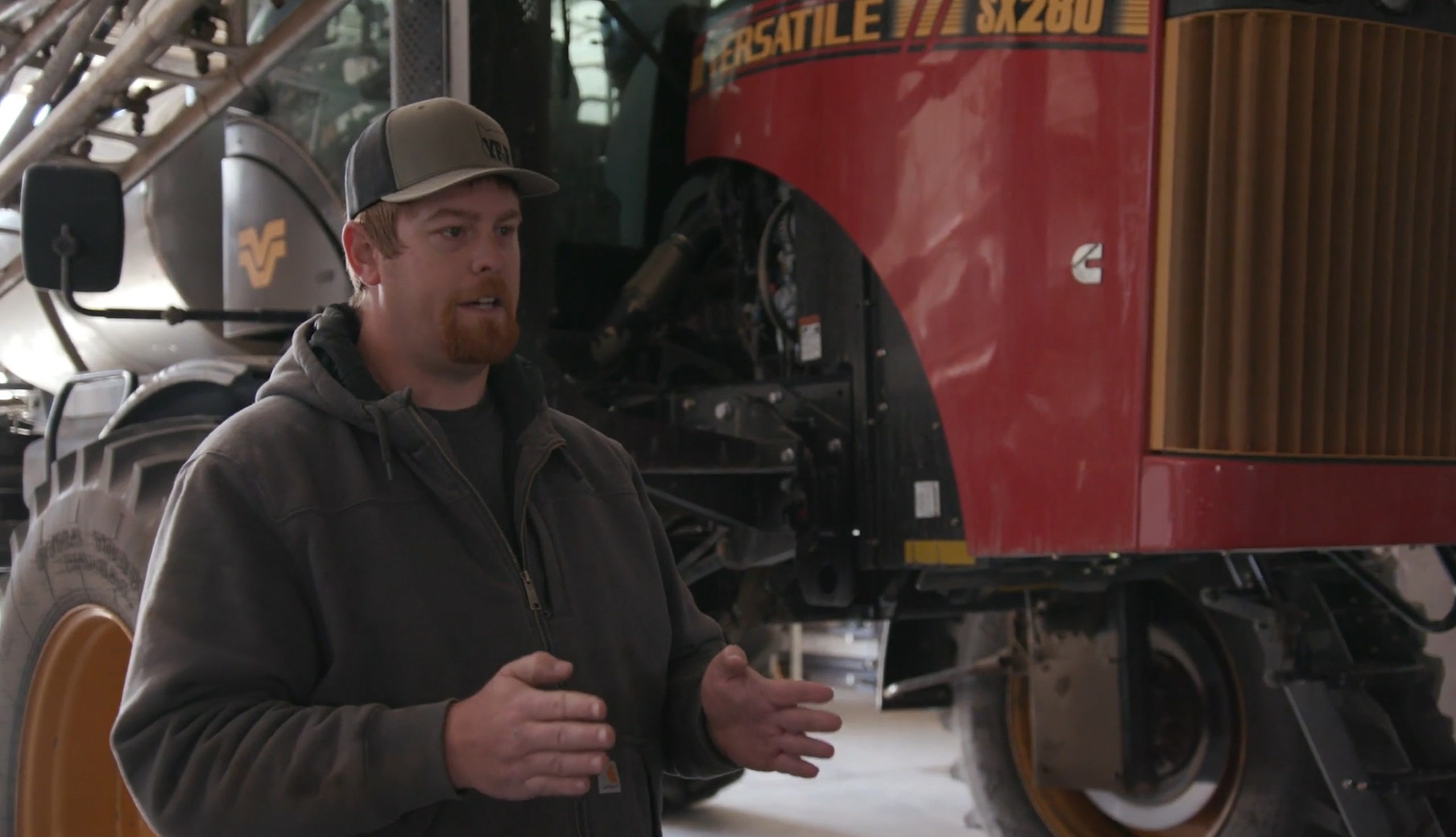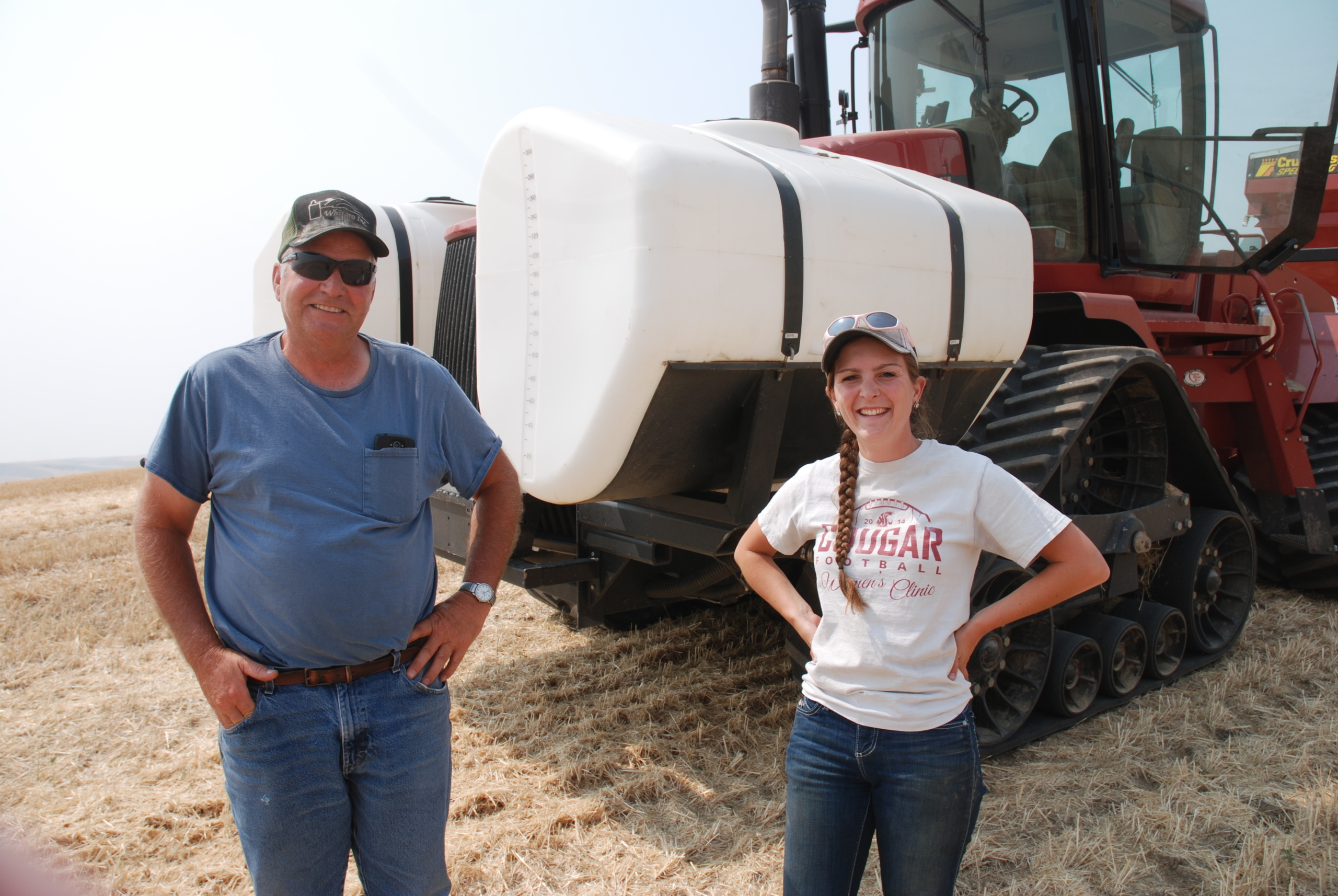U.S. wheat farmers know that precision agriculture practices that foster economic and environmental stewardship are increasingly important to the world’s buyers and wheat food processors. In this article, originally published Nov. 30, 2020, by Agri-Pulse and reprinted with permission, the author Steve Davies discusses how new technologies are changing U.S. farms.
New forms of farming equipment could make it easier for growers to more precisely apply nitrogen fertilizer and other inputs — in other words, make precision agriculture more precise.
Much of the increase in productivity is likely to come from technology — the satellites, soil sensors, computer modeling and data-crunching that will provide usable information for growers.
“There is a ton of technology embedded into accelerating the process of improving soil health,” says Dorn Cox of the Wolfe’s Neck Center, which is working with corporate, government and nonprofit partners to develop an Open Technology Ecosystem for Agricultural Management (OpenTEAM) that promises to provide farmers access to site-specific data by 2024.
“We’re moving into essentially managing much more complex systems, especially in light of climate change,” says Cox. Much of what OpenTEAM is doing, he says, is trying to tie together all the different tools that are available, including artificial intelligence, remote sensing, lower-cost edge computing devices, and analytics.
“A lot of those pieces are there, but they have not been connected into a coherent ecosystem that is useful for a researcher or producer,” he says.
More Farmers Adopting Precision Agriculture
Rates of adoption for precision agriculture vary widely by region, says Curt Blades, senior vice president for agriculture and forestry at the Association of Equipment Manufacturers, which is releasing a study early next year on the environmental benefits of precision agriculture.
Citing USDA data, he says yield monitors are being used by 69% of growers, and auto-steer, which enables farmers to precisely navigate their fields, is being used about by two-thirds, though rates are higher when looking only at row crops.
Use of variable rate technology, allowing precision application of inputs, stands at about 41%, he said. “Where you really unlock the power of a yield monitor is when you tie it to a map” showing the conditions in a field, allowing growers to pinpoint which area might need more fertilizer or which might need more water, he says.
“All of those things would not be available if you didn’t have GPS technology,” he said. He emphasized the importance of rural broadband, which he calls “critical to the future of our country. It’s got to be wireless to the field to really take full advantage of some of this great technology.”
Just using auto-steer and ensuring the machine’s computer systems are all working together properly — or telematics — saves 6% on fuel, Blades says. In addition, the new generation of farm equipment is about 20% more fuel-efficient than the previous one, causing some farmers to tell Blades they upgraded their combines based on fuel efficiency alone.

Optimizing Inputs and Yields
Nathan Fields, vice president of production and sustainability at National Corn Growers Association, thinks over the next decade, growers will be looking more at optimizing input use as opposed to simply increasing yields.
“Optimization does not necessarily mean yield,” he said. “It could mean yield and profitability.” But that can mean taking a “multi-year, almost a decade-long approach. And that is really hard to do with cash rent. That is really hard to do with the capital cycles that growers have to operate under.”
New tools are coming all the time. Anticipating commercialization, AMVAC Chemical Corp. and Corteva Agriscience just announced completion of testing on AMVAC’s proprietary SIMPAS prescriptive application equipment, which “allows farmers to prescriptively apply multiple at-plant solutions,” the companies said.
SIMPAS equipment can apply multiple products in fields similar to the way a printer dispenses ink from ink cartridges, the companies say. The system uses software to control the application rate of each product on every row at every location in the field.
Fields thinks adoption of precision ag equipment will increase as the ag economy improves. “I think growers are looking for more of a stable ag economy in the coming years,” which will spur adoption, he said. “That’s what we saw in that commodity super-cycle from 2007 to 2012. You know, technology adoption just ran rampant those years.”
Read other stories in this series:
Special Climate and Sustainability Committee Launched on Earth Day
Precision Agriculture Improves Environmental Stewardship While Increasing Yields
U.S. Farmers Always Think About Economic and Environmental Sustainability
Technology, Innovative Farming Practices Advance Wheat Farm Sustainability
Minnesota Farmer Spread the News with His Conservation Practices
U.S. Farmers Embrace Conversation Practices
Cargill CEO Highlights Farmers Role in Pandemic and Promoting Sustainability


